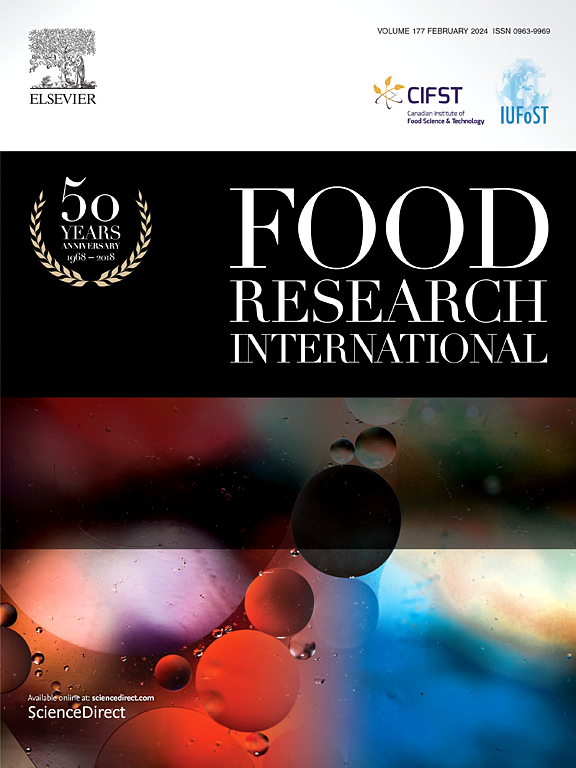Predicting loaf volume of white bread by near infrared spectroscopy on wheat flour. Comparative application: NIR reflection, NIR transmission and portable NIR reflection
IF 7
1区 农林科学
Q1 FOOD SCIENCE & TECHNOLOGY
引用次数: 0
Abstract
White bread is a worldwide consumed food product with significant nutritional value. The loaf volume of bread is a crucial parameter that influences its texture, appearance and consumer acceptability. Near Infrared Spectroscopy (NIRS) has shown significant potential in predicting the loaf volume of white bread, providing a faster and potentially more accurate alternative to time consuming traditional methods. This study investigates the effectiveness of NIRS and Near Infrared Transmission (NIT) spectroscopy in predicting loaf volume based on wheat flour measurements using both benchtop instruments and a portable FT-NIR instrument. A set of 154 wheat flour samples, including both winter and spring varieties, was analyzed. The performance of NIRS and NIT models was compared with conventional flour analysis methods such as farinograph, alveograph, and rapid visco analyzer. The regression models based on NIR and NIT data demonstrated higher prediction accuracies comparable to traditional methods while significantly reducing both time and complexity of the analysis. This study underscores the potential of NIRS technology to offer rapid and precise predictions of loaf volume, proving to be a valuable tool for baking producers of all scales. Furthermore, the availability of affordable and portable NIR devices makes this technology accessible for small-scale producers, enabling broader adoption across the baking industry.

小麦粉近红外光谱法预测白面包的面包体积。对比应用:近红外反射、近红外透射、便携式近红外反射
白面包是一种全球消费的食品,具有重要的营养价值。面包的体积是影响其质地、外观和消费者接受度的重要参数。近红外光谱(NIRS)在预测白面包的面包体积方面显示出巨大的潜力,为耗时的传统方法提供了一种更快、更准确的替代方法。本研究利用台式仪器和便携式FT-NIR仪器,研究了近红外光谱(NIT)和近红外光谱(nir)在预测小麦面粉体积方面的有效性。对154份小麦粉样品进行了分析,包括冬小麦和春小麦。将NIRS和NIT模型与传统的面粉分析方法(如面粉谱仪、肺泡仪和快速粘度分析仪)的性能进行比较。与传统方法相比,基于NIR和NIT数据的回归模型具有更高的预测精度,同时显著降低了分析的时间和复杂性。这项研究强调了近红外光谱技术的潜力,提供快速和精确的面包体积预测,证明是一个有价值的工具,为所有规模的烘焙生产商。此外,价格实惠的便携式近红外设备的可用性使得小规模生产商可以使用这项技术,从而在整个烘焙行业得到更广泛的采用。
本文章由计算机程序翻译,如有差异,请以英文原文为准。
求助全文
约1分钟内获得全文
求助全文
来源期刊

Food Research International
工程技术-食品科技
CiteScore
12.50
自引率
7.40%
发文量
1183
审稿时长
79 days
期刊介绍:
Food Research International serves as a rapid dissemination platform for significant and impactful research in food science, technology, engineering, and nutrition. The journal focuses on publishing novel, high-quality, and high-impact review papers, original research papers, and letters to the editors across various disciplines in the science and technology of food. Additionally, it follows a policy of publishing special issues on topical and emergent subjects in food research or related areas. Selected, peer-reviewed papers from scientific meetings, workshops, and conferences on the science, technology, and engineering of foods are also featured in special issues.
 求助内容:
求助内容: 应助结果提醒方式:
应助结果提醒方式:


